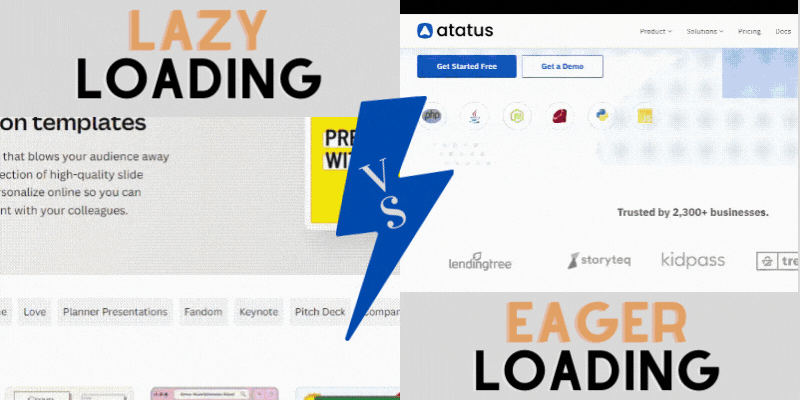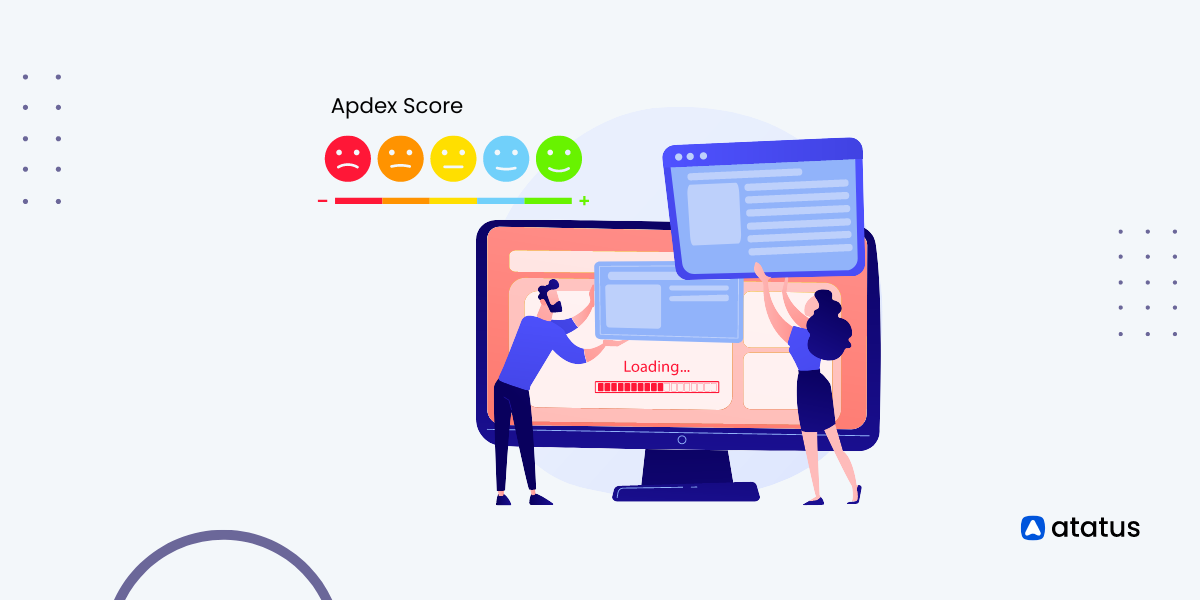Things you should know about Lazy Loading
As in definition, the term lazy loading is a custom of hindering the load or configuration of sources or entities until it is primarily required to upgrade functioning and maintain system sources.
For say, let's assume a lazy loading example, if an Internet domain has a depiction that the client has to browse down to refer to, by creating placeholder content or the website page loader, the webpage starts to lazy load the content by allowing the website to provide only the accessed content instead of bulk loading all the content.
Precisely for instance, a client summons for the blog related to API monitoring of Atatus from a search engine. The entire website, swarmed with the requested content, is loaded.
Once the page starts loading, the user may already navigate to the next page based on the images on the very first page. Hence, the other images that once would be loading before the top page, would not be useful in this case.
Thereby wastage of resources that are spent in loading all the images can be avoided by using lazy loading with either a placeholder or website page loader.
In this section, we will cover the following topics on lazy loading;
Table of Contents
- What is lazy loading?
- Instances for lazy loading
- Virtues of lazy loading
- Eager loading vs lazy loading
- Repercussions of lazy loading
What is Lazy Loading?
Lazy loading or on-demand loading is an intensification technique for web-based content; it can be an internet site or a web-enabled application for say, Google images. Generally, when a user accesses an internet domain, it bulk loads the entire page in a single go.

But sometimes, a few clients might be glued only to the first page of the website. Thus, the upshot is wasting memory and capacity.
The lazy loading technique is used to optimize the load time of the webpages, as this loads solely the content that is required or accessed by the user and gradually loads the continuing content of the webpage, only when the user browses through it. As the browser loads a fragment of the content, this reduces the time taken by a webpage to launch.
Instances for Lazy Loading
The finest example of lazy loading is the established blogging forum Medium, which loads translucent placeholder images and gradually replaces them with lazy loaded images as the user scrolls down the windowpane.

The other illustrations are image sharing platform Pinterest and the designing web forum Canva. Instead of loading the contents or images in one go while scrolling the images on website, those are lazy loaded, coinciding with the entail of the client.
Virtues of Lazy Loading
- Implementing lazy loading curtails primary load time as this enhances a website or an internet domain by minimizing the page weight, allowing for a faster page load time with website page loader.
- Lazy loading objects guides in maintaining system resource preservation as it renders or accesses only a specific part of the webpage by executing only images, content, or any other code; by preserving the resources of both servers and clientele.
- Lazy Loading caches or images proffers content just in time to the user if it is needed, therefore intensifying the usage of bandwidth.
Eager Loading Vs Lazy Loading
Contradictory to lazy loading, eager loading instantiates, or loads a source as soon as the cryptograph is enforced.
Eager loading is the technique by which a query for one sort of entity also loads associated entities as part of the query.
By virtue of eager loading, a web forum loads all of its content promptly. However, lazy loading support delay in launching content with website page loader, that is not requisite by the user.

The web directory accumulates all contents of the website in its cache when eager loading is accustomed.
Whereas lazy loading doesn’t store any cache as it loads only the needed part of an lazy loader internet domain.
Eager loading reduces queries by authenticating that the page and its linked constituents are loaded altogether, hence saving time.
In view of lazy loading, it loads solely some images and JavaScript from a web forum. Therefore, helps in conserving system resources and bandwidth of both the user and server.
Repercussions of Lazy Loading
Lazy loading elevates the page in loading quickly by the website page loader configuration. Thereupon the client can retrieve the content swiftly. yet the rankings on search engines might get impacted while optimizing SEO.
Lazy loading impacts crawling when there is a delay in loading the lazy loader forum, the search engines might not crawl the entire page.
Despite that, the content will not be shrugged off as it will be delayed and the rankings will not be spotted on the topmost.
To reduce its impact on rankings, the significant content must be noticeable first. and also providing links to the lazy loaded content can assist the user to access the content with ease even when the content troubles in loading.
Wind Up
Lazy loading optimizes the website page loader time and enhances conserving system resources, bandwidth, and saves time. But the sole pitfall of lazy loading is its impact on SEO by affecting the rankings on search engines.
Nevertheless, lazy loading website or videos or images helps uninterrupted browsing for clients. For businesses, it helps to acquire traffic for content.
Thereupon pouring up lazy loading in mandatory places for say, background image will not spill the soup from the bowl( will not cause issues). To monitor page load time using Real User Monitoring opt-in for Atatus.
Monitor Web Performance With Real User Monitoring
Real user monitoring is a solution that assists you to obtain full-stack visibility on the poor-performing front-end code of your website.
It monitors the end-user experience and imparts real-time feedback on what the user is perceiving.
When you are employing Atatus, you can find out which pages are not loading correctly or how long it takes for a page to load. You can also check errors that have been generated.
Atatus is a uniquely designed, full-stack observability platform that is a one-stop solution for your entire application.
It provides an inclusive set of monitoring tools that covers all necessary indicators, including server performance, Application performance monitoring, and log analytics. It has plugins that work with any front-end framework.
#1 Solution for Logs, Traces & Metrics
APM
Kubernetes
Logs
Synthetics
RUM
Serverless
Security
More





